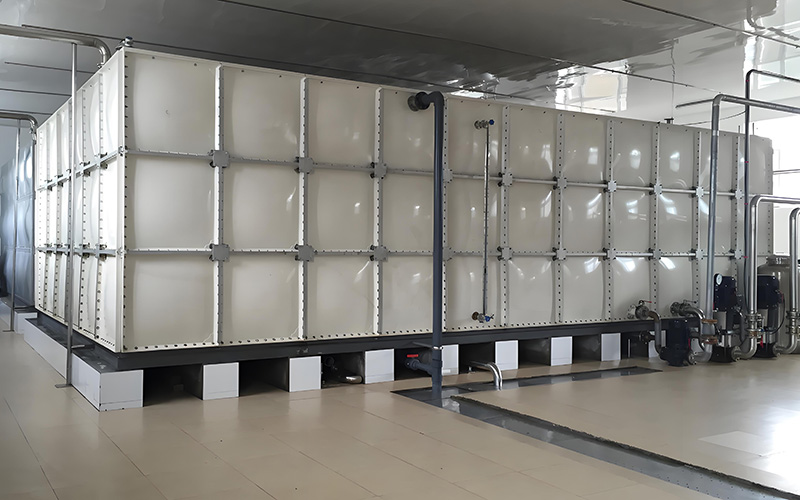When choosing a reliable solution for liquid storage, FRP (Fiber Reinforced Plastic) water tanks are becoming a top choice across industries. Known for their strength, durability, and resistance to corrosion, FRP storage tanks offer long-lasting performance in a wide range of applications, from residential water storage to industrial and municipal use.
As a leading manufacturer of FRP water tanks, we’re here to explain what an FRP water tank is, how it works, and why it might be the right choice for your project.

An FRP water tank is a reinforced plastic storage container made by combining a plastic matrix (typically polyester, epoxy, or vinyl ester resin) with glass fibers. This results in a lightweight but extremely strong composite material. FRP tanks are designed to withstand harsh environments, heavy loads, and corrosive substances, making them ideal for storing potable water, wastewater, chemicals, and more.
FRP tanks come in various shapes and sizes, including cylindrical, rectangular, vertical, and horizontal designs. They can be customized with internal linings, insulation, nozzles, and structural supports to meet specific application needs.
1. Corrosion Resistance
FRP does not rust or corrode, even when exposed to saltwater, chemicals, or high humidity environments. This makes FRP tanks especially suitable for coastal, chemical, and industrial use.
2. Lightweight and Strong
Compared to steel or concrete tanks, FRP tanks are much lighter but maintain high structural integrity. This reduces transportation and installation costs.
3. Low Maintenance Requirements
The smooth, non-porous inner surface prevents algae, bacteria, and sediment buildup, lowering maintenance needs and ensuring water purity.
4. Long Service Life
Well-manufactured and installed fiberglass water tanks can last 30 to 50+ years, delivering long-term return on investment.
5. Customizable Design
From UV protection and insulation to pressure ratings and specialized linings, FRP tanks can be engineered to meet exact project demands.
FRP water storage tanks are used in a wide variety of sectors, including:
Municipal Systems: Fire suppression, drinking water, stormwater, and irrigation
Industrial Facilities: Process water, chemical containment, and wastewater storage
Agricultural Operations: Water for crops and livestock, fertilizer storage
Commercial Buildings: Greywater recycling, rooftop rainwater harvesting
Thanks to their versatility, FRP tanks perform well in both indoor and outdoor environments.
Here’s how FRP water tanks compare to other common tank materials:
| Material | Corrosion Resistance | Weight | Lifespan | Maintenance Needs |
|---|---|---|---|---|
| FRP | Excellent | Light | 30–50+ years | Low |
| Steel | Poor (needs coating) | Heavy | 15–25 years | High |
| Concrete | Moderate | Very Heavy | 20–40 years | Moderate |
| Polyethylene | Good | Light | 10–20 years | Low |
As a reliable FRP storage tank supplier, we provide:
Custom-designed FRP tanks to suit your space, volume, and use case
High-performance materials and advanced manufacturing techniques
Technical consultation and full support from design to delivery
Looking to invest in durable and cost-effective fiberglass water storage tanks? Contact us today for a free quote, expert advice, and reliable solutions tailored to your needs.